Case
Resyone Plus is a robotic movement support device that transforms half of the user’s bed into a wheelchair, allowing caregivers to easily and singlehandedly transfer them without lifting. Resyone Plus makes transfers quicker while reducing physical and psychological strain on caregivers, meanwhile offering security and peace of mind to users as they get out of bed. The result is greater freedom of lifestyle and satisfaction for every member of the family.
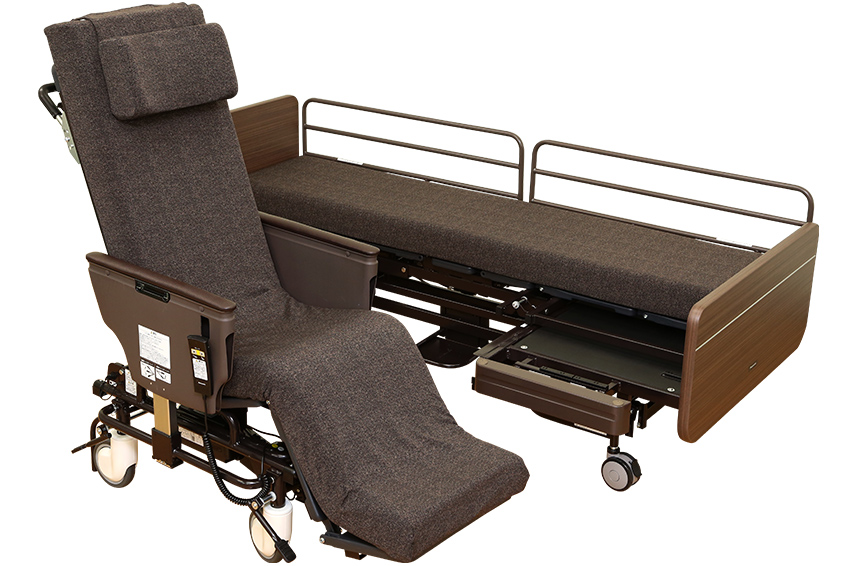
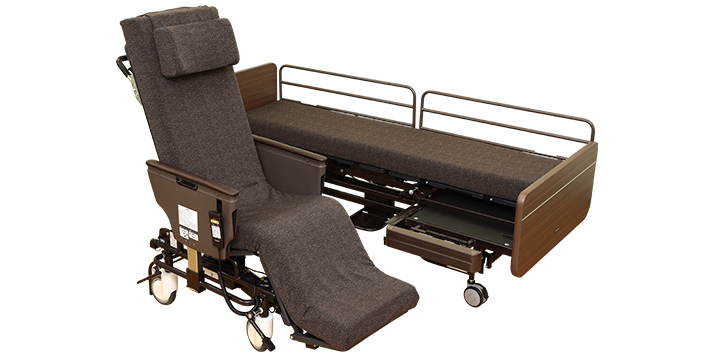
On-Site Testing
Resyone Plus
Future Care Lab in Japan’s first on-site testing project started shortly after the Lab was established. It featured the Resyone Plus Rise Assisting Robot, technology that makes it easier to transfer people from beds to wheelchairs. The Lab performed on-site testing of Resyone Plus in tandem with a development company. The introduction of the product resulted in satisfaction across the board—among users and their families, caregiving professionals, and facility administrators alike.
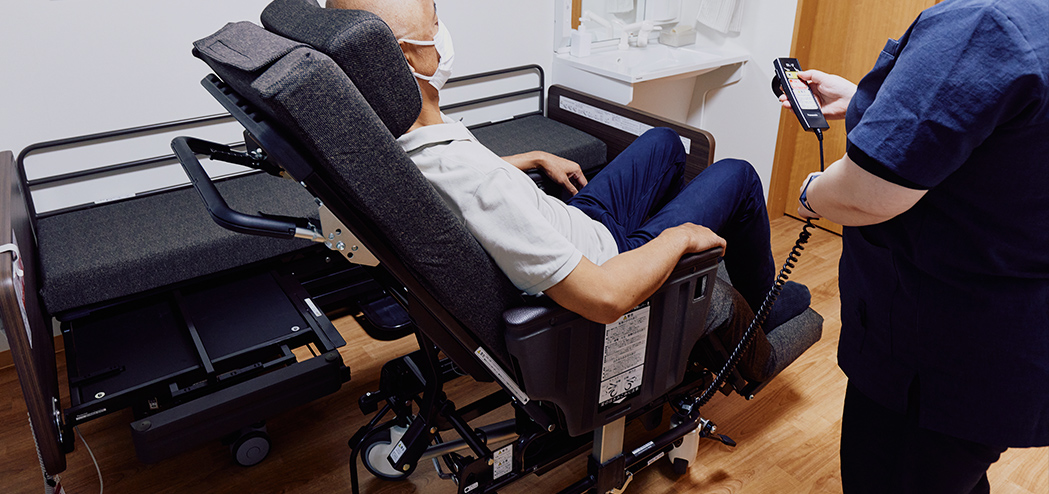
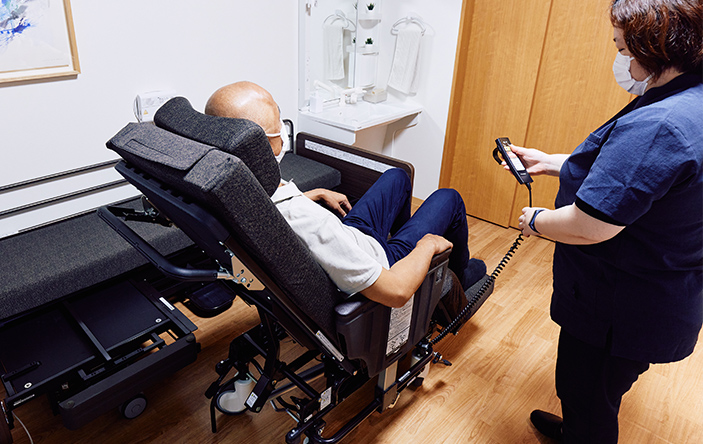
From
the Development Company
One of the most physically demanding tasks caregivers face is helping with transfers. We wanted to use robot technology to make it easier for them to get people from their beds into wheelchairs, in turn making caregiving settings better places to both give and receive care. That’s what led us to develop Resyone Plus.
Our work with Future Care Lab in Japan (“the Lab”) started with us giving them a product presentation as part of our marketing activities. After looking into it, they decided to rent out the Resyone Plus to their Sompo Care facility for a two-week trial. It was the first time the facility had adopted a technological solution, so we were concerned that they might be resistant to the idea. But the Lab team paved the way for us with the nursing care facility, so everything from getting the products in there to interacting with the on-site team went smoothly.
We want to encourage many more facilities to use the device, so we will meet with representatives from the caregiving site to ask them what they want to see improved, and then use their feedback to drive the product development and improvement process. A third of Japan’s population will be 65 or over by 2025, with 8.3 million of them expected to need nursing care. Our company is dedicated to being a supportive partner in senior living, and our goal is to support nursing care activities that put a smile on everyone’s face—users, their families, and nursing care professionals.
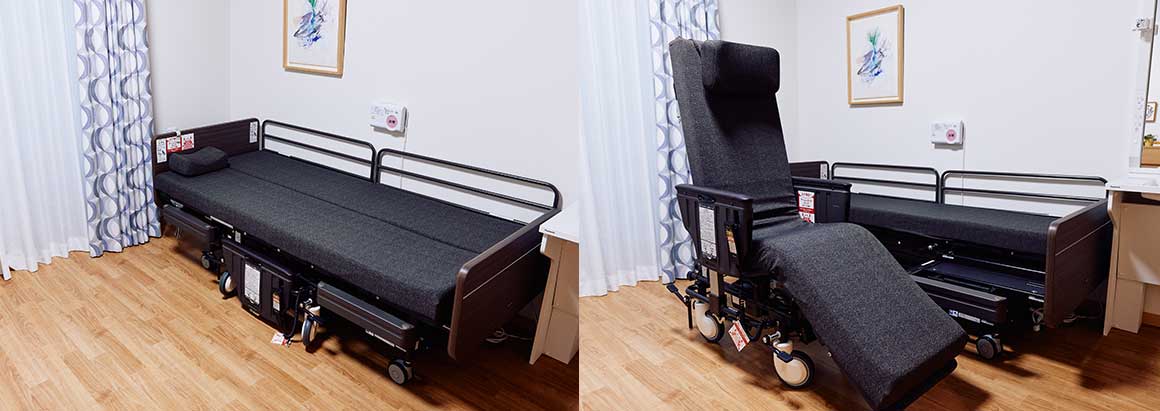

From
Future Care Lab in Japan
It often takes two caregivers working together at nursing care facilities to move patients from their beds to wheelchairs. It’s challenging work—not only because it’s difficult to coordinate the timing of their movements, but also because of the tremendous back strain involved in lifting the person. When the development company told us about the Resyone Plus in their marketing presentation, we thought that a product that could transform half a bed into a wheelchair would go a long way towards solving these problems.
We started by renting out the beds to a facility for two weeks as a trial in order to do some on-site testing. Not only was this our first on-site testing effort after establishing the Lab, it was also the first time we had introduced a technology to our flagship facility—so the head of the senior care center and its employees were a little apprehensive about whether they’d really be able to make it work. But a few days later the employees put it to use, and after a week they told us that the Resyone Plus was making things easier on them. When we went back to collect the beds two weeks later, they didn’t want us to take them. Both the users and their families were delighted with the product, so we decided to officially introduce them to the facility.
The development company team carefully prepared a method for verifying the before-and-after results of the introduction, which allowed us to visually track the positive responses we received from three separate groups: users and their families, caregiving professionals, and facility administrators. The data was tremendously valuable in our subsequent efforts to test and verify Lab technologies. The project also underlined for us just how important it is to have requirement definitions to help us decide whether a technology we’re introducing to a care setting is a good fit for the target users.
Going forward, we want to make a concerted effort to bring in solutions for users who need more intensive levels of care. The role of the Lab in this project was to make clear requirement definitions and serve as an intermediary between nursing care facilities and development companies so that we could seamlessly offer the right product to the right people—and the experience gave us lessons that serve us with every piece of technology we work with.
Interviews based on information current as of September 2021.
OTHER CASE